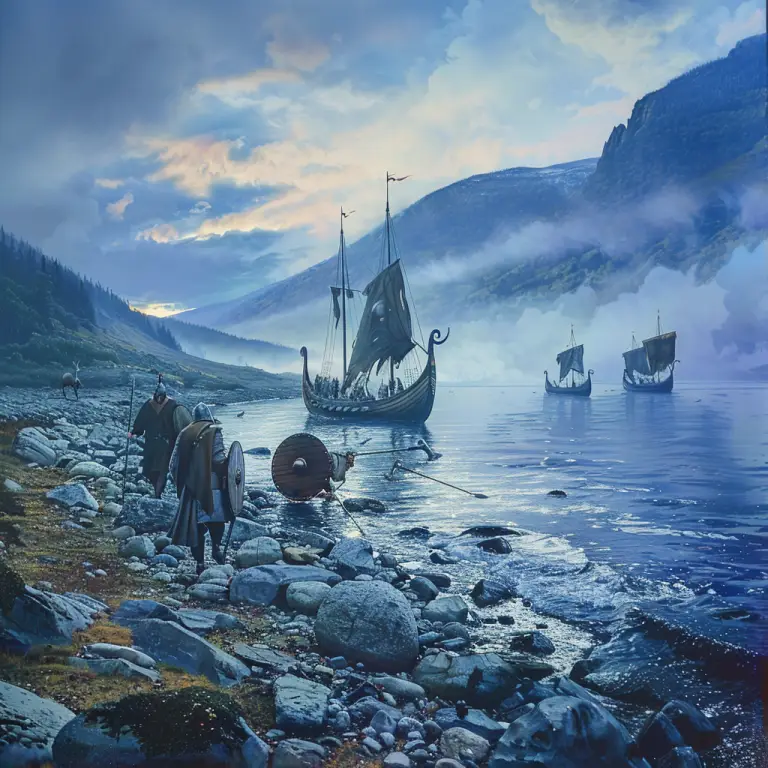The Vikings were among the first Europeans known to have reached North America, centuries before Columbus. Around 1000 CE/AD, Norse explorers from Greenland, led by Leif Erikson, established a temporary settlement at a site now known as L’Anse aux Meadows in Newfoundland, Canada. This settlement, now a UNESCO World Heritage Site, is the only confirmed Viking site in North America and provides evidence that the Vikings reached the continent.
Leif Erikson and Vinland:
According to the Icelandic sagas, specifically the Saga of the Greenlanders and the Saga of Erik the Red, Leif Erikson set sail from Greenland and landed in a region he called Vinland due to its wild grapes and fertile land. This area likely covered parts of what are now Newfoundland, the Gulf of St. Lawrence, and even possibly further down the North American coast.
Vinland’s exact location is still debated, but it is generally believed to be in northeastern North America, possibly extending into modern-day Canada.
L’Anse aux Meadows:
Discovered in 1960 by Norwegian explorer Helge Ingstad and archaeologist Anne Stine Ingstad, L’Anse aux Meadows is the only confirmed Viking settlement in North America. Artifacts such as iron tools and Norse-style buildings indicate the Norse presence, dating back roughly 1,000 years.
This settlement likely served as a temporary base for exploration, trade, or resource gathering, but it does not appear to have been a long-term settlement. The Vikings possibly used it as a waystation for acquiring timber, hunting, and exploring further south.
Interactions with Indigenous Peoples:
Norse sagas describe encounters with Indigenous peoples, whom they referred to as Skrælings. These encounters were sometimes hostile, and cultural and language barriers likely complicated any potential trade or exchange.
Hostile conflicts may have been a factor in the Vikings’ decision not to establish a permanent colony in North America, along with the challenges of supplying and defending such a distant outpost.
Short-Lived Presence:
The Viking presence in North America was brief. They were unable to establish a sustainable colony, possibly due to factors like hostile interactions, isolation from Norse settlements, and the harshness of the environment.
After a few expeditions, the Norse abandoned Vinland and focused on settling and trading in Greenland, Iceland, and Europe.
Legacy and Influence:
The Norse exploration of North America left no lasting impact on the Indigenous cultures or landscape but remains a significant chapter in the story of early transatlantic exploration.
Today, Leif Erikson is celebrated as the first known European to reach North America, and there are commemorations across North America, particularly in Icelandic and Norwegian communities in Canada and the United States.





